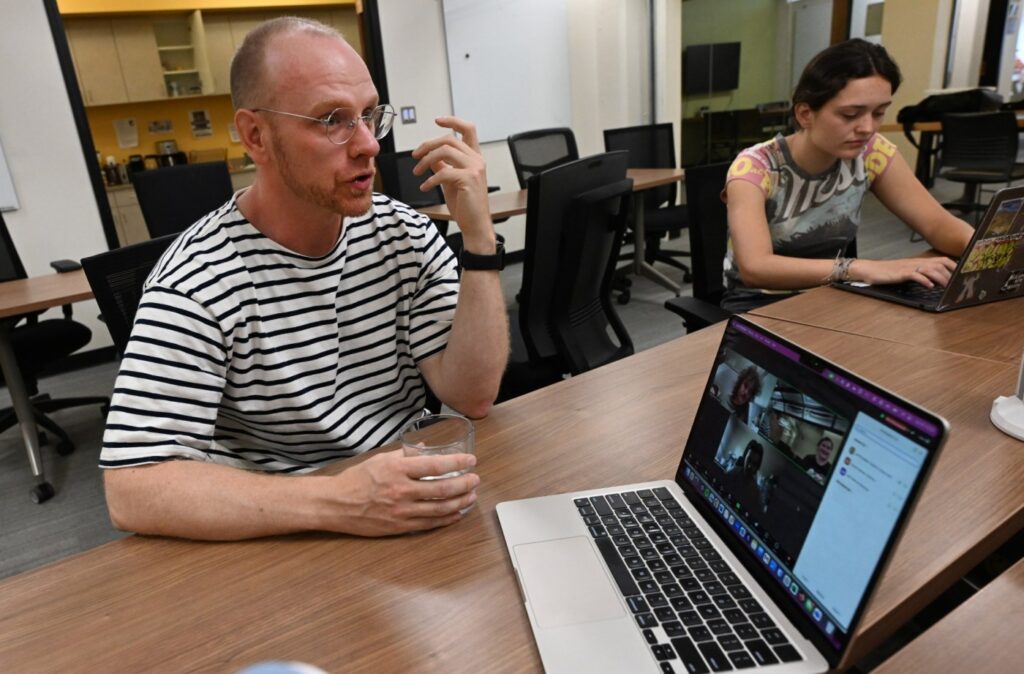
Imagine a world where you can interact with an AI representation of a deceased loved one, capable of conversing and behaving just as they did in life. This scenario, once relegated to the realm of science fiction, is swiftly becoming a reality. At the forefront of this technological frontier is Jed Brubaker, a professor at the University of Colorado Boulder, who is leading research into what he terms “generative ghosts.”
“It’s not a question of if generative ghosts are coming, it’s a question of when,” Brubaker stated. He emphasized the importance of designing these AI entities to be positive and socially beneficial, while avoiding unforeseen negative outcomes.
Understanding Generative Ghosts
Generative ghosts are AI agents designed to emulate deceased individuals by acting on their behalf or even as them. Unlike traditional AI chatbots, these entities can generate new content based on a wealth of data, such as emails and videos. This capability raises both exciting possibilities and ethical concerns.
CU Boulder graduate student Daniel Sullivan expressed enthusiasm about being at the forefront of such groundbreaking technology. “It tends to elicit a very visceral reaction, like that is a very scary or dystopian thing,” Sullivan noted, acknowledging the varied perspectives on the subject.
Embodiment and Interaction
Brubaker explained that the form in which these AI ghosts manifest—whether through text, voice, or virtual reality—will significantly impact how users perceive and interact with them. “The modality in which we’re going to interact with these things is going to vary,” he said, highlighting the importance of understanding user preferences and potential benefits or detriments.
Current Developments and Applications
Brubaker and his team have documented existing AI ghost technologies in their paper, “Generative Ghosts: Anticipating Benefits and Risks of AI Afterlives.” Several startups are already offering services to create AI representations of individuals while they are still alive.
For instance, Re;memory uses DeepBrain AI to create interactive virtual representations after extensive filming and interviews, allowing friends and family to engage with a person’s memory posthumously. Similarly, HereAfter2 offers an app that constructs a digital persona through user interviews.
Beyond personal use, some institutions are creating AI ghosts of historical figures for educational purposes. Brubaker mentioned colleagues at MIT developing a virtual Leonardo da Vinci for a Paris museum, while Holocaust studies aim to preserve survivor memories through AI.
Public Perception and Emotional Impact
Brubaker’s lab is actively researching public sentiment towards AI ghosts by facilitating interactions and recording participants’ reactions. Graduate student Jack Manning stressed the importance of considering emotional responses to ensure these technologies are beneficial and enduring.
“At the end of the day, if you’re not taking into consideration people’s feelings, reactions and emotions, it will inevitably move fast and crumble easily,” Manning said.
Ethical Considerations and Risks
While the potential of AI ghosts is vast, so too are the ethical dilemmas. One significant concern is the impact on grief—whether these digital entities will aid in the grieving process or complicate it further. Brubaker highlighted the need for more research in this area.
Another critical issue is consent. Did the deceased intend to leave an AI ghost? If not, the creation of such entities could lead to unintended harm. The paper outlines risks such as post-mortem identity theft, privacy breaches, and the potential for malicious use.
“An abusive spouse might develop a generative ghost that continues to verbally and emotionally abuse their surviving family members,” the paper warned.
Potential Benefits and Future Directions
Despite these risks, there are compelling reasons for creating AI ghosts. They could assist in memorial planning, clarify final wishes, or offer comfort by preserving a loved one’s voice. Brubaker noted that grief evolves, and the appropriateness of interacting with an AI ghost may change over time.
“Part of the lab work we’re doing now is figuring out those social, emotional and cultural factors that influence how people experience and benefit or not from ghosts,” Brubaker explained.
As society stands on the cusp of an era where AI agents could become ubiquitous, the need for thoughtful design and ethical considerations is paramount. The work of Brubaker and his team is crucial in navigating this complex landscape, ensuring that the digital afterlife is as respectful and beneficial as possible.






